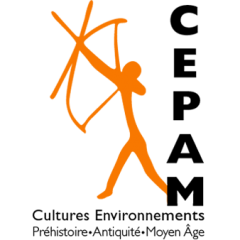L’association, dans le titre de cette table ronde, des termes « humanistes » et « Église » renvoie sciemment à un horizon historiographique à la fois dense et contrasté, mais souvent limité par une approche trop compartimentée des phénomènes et par une vision téléologique qui recherche dans les écrits des humanistes la naissance de la laïcité ou de la culture moderne.
C’est pourquoi la table ronde se fonde sur une définition large du terme « humanistes » et sur la prise en compte de l’insertion de ces derniers dans un contexte social. Il nous paraît nécessaire de dépasser un point de vue qui assigne un rôle exclusif à la conscience individuelle d’être plus ou moins chrétien, plus ou moins dévot et à une hypothétique laïcité des protagonistes de la nouvelle culture, ce qui revient à abandonner une vision qui persiste dans l’historiographie humaniste et oppose, non sans ambiguïté, esprit moderne à esprit médiéval, religiosité à laïcité, Église à humanisme.
En outre, nous souhaitons élargir la périodisation traditionnelle (fine du XIVe-début du XVIe siècle) et envisager la question dès le XIIIe siècle. Cette proposition vise à reprendre la question des rapports des humanistes avec la tradition des dictatores, afin de réexaminer la question des relations entre litterati laici et litterati clerici. En effet, l’humanisme est encore très largement connoté dans un sens anti-scolastique et anticlérical. C’est pourquoi le point de départ choisi est plutôt celui d’une « culture humaniste » naissant de l’apparition des litterati laici qui se confrontent à la culture ecclésiastique : une confrontation qui ne doit pas être lue en terme d’opposition ou de collaboration, mais plutôt de féconde émulation et de continuel va et vient dans des contextes sociaux et culturels à reconstruire. De fait, l’humanisme apparaît d’abord comme une pratique sociale qui se déploie au sein de réseaux plus ou moins intégrés aux cités ou à l’Église, et qui génèrent des pratiques discursives spécifiques.
En somme, nous souhaiterions que notre rencontre contribue à éclairer les modalités d’un investissement tous azimuts des laïcs dans des domaines et des discours propres aux ecclésiastiques et celles de l’appropriation, de la part des lettrés humanistes, de domaines et de formes discursives qui étaient réservés aux clercs : la théologie, l’hagiographie (humanistes comme hagiographes et humanistes comme protagonistes d’hagiographie), l’exégèse, le droit, la prédication, l’ecclésiologie, voire l’iconographie.
La table ronde des 23-24-25 octobre 2008 constitue l’aboutissement et la conclusion d’un cycle de rencontres coordonnées au cours des trois années précédentes dans le cadre de la programmation du CEPAM (UMR 6130, Université de Nice/CNRS) par Cécile Caby et Rosa Maria Dessì.
Programme
Introduction : Cécile Caby et Rosa Maria Dessì
Rhétorique, prédication, images
Benoît Grévin (CNRS/LAMOP) :
La pratique de l’ « ars dictaminis » entre clercs et laïcs dans l’Italie du XIIIe-XIVe siècle : dynamiques socio-institutionnelles, enjeux symboliques, signification culturelle
Étienne Anheim (Université de Versailles-Saint-Quentin) :
Un évangéliste à la cour pontificale d’Avignon : saint Jean entre scolastique et humanisme
Rosa Maria Dessì (Université de Nice) :
Pétrarque prédicateur
Hagiographie et philologie
Mariarosa Cortesi (Université de Pavie) :
Padri della Chiesa e filologia per un rinnovamento della cultura nel Quattrocento
Alison Frazier (University of TX at Austin) :
Saints’ Lives on Commission
Lucia Baroncini (Université de Bologne) :
Una riscrittura « umanistica » dalla Legenda Aurea: l’Istoria di san Clemente attribuita a Guido Gonzaga
Entre sacré et profane : musique et danse
Marina Nordera (Université de Nice) :
Une commande laïque à un « clericus littérature » : la traduction du dialogue « Peri orcheseos » de Lucien de Samosathe par Athanase Calkeopoulos et le contexte culturel de l’Italie du sud vers la fin du XVe siècle
Stefania Vitali (Rome) :
Pratiche musicali tra sacro e profano: le laudi a Firenze nel XV secolo
Les humanistes et les pouvoirs souverains
Patrick Gilli (Université de Montpellier III) :
Les humanistes et le droit canon (XIVe-XVe siècle)
Clémence Revest (Université de Paris IV-Sorbonne) :
Pier Paolo Vergerio l’Ancien face à la crise de l’Eglise, de la mêlée à l’exil (c.1398-1417)
Luca Boschetto (Florence) :
Eugenio IV, gli umanisti, Firenze
Béatrice Périgot (Université de Nice) :
Pouvoir spirituel et pouvoir temporel : la méthode de Marsile de Padoue dans le « Defensor pacis »
Amedeo De Vincentiis (Université de Viterbe) :
Biografi del papa. Sovranità e sacerdozio nelle vite dei pontefici del ‘400
Réseaux, représentation et auto-représentation de l’humaniste
Concetta Bianca (Université de Florence) :
All’ombra dello Studium: ecclesiastici e laici nella Roma del Quattrocento
Francesco Bausi (Université de Cosenza) :
Chierici e laici in due dialoghi del primo Quattrocento : il « De avaritia » di Poggio Bracciolin»i e il « Dialogus Consolatorius » di Giannozzo Manetti
Cécile Caby (Université de Nice, IUF) :
Réseaux de pouvoir, pratiques culturelles et genres discursifs : à propos du dialogue « De optimo genere vite » de Girolamo Aliotti
Erminia Irace (Université de Pérouse) :
L’immagine della comunità letteraria nelle « Italie » di Flavio Biondo e Leandro Alberti
Paolo Carta (Université de Trento) :
I maestri di Francesco Guicciardini
Conclusions : Diego Quaglioni (Université de Trente)

